| Active with remarks |
|---|
| This application needs additional settings. Please follow the documentation below to create your own connectionUnique, active service acces point to a network. There are different types of connections (API key, Oauth…). More. |
The KanbanFlow modulesThe module is an application or tool within the Boost.space system. The entire system is built on this concept of modularity. (module - Contacts) More allow you to watch, create, update, list, and delete the tasks in your KanbanFlow account.
Prerequisites
-
A KanbanFlow account
In order to use KanbanFlow with Boost.spaceCentralization and synchronization platform, where you can organize and manage your data. More IntegratorPart of the Boost.space system, where you can create your connections and automate your processes. More, it is necessary to have a KanbanFlow account. If you do not have one, you can create a KanbanFlow account at kanbanflow.com/.
To connect your KanbanFlow account to Boost.space Integrator you need to obtain the API tokenThe API token is a multi-digit code that allows a user to authenticate with cloud applications. More from your KanbanFlow account and insert it in the Create a connection dialog in the Boost.space Integrator moduleThe module is an application or tool within the Boost.space system. The entire system is built on this concept of modularity. (module - Contacts) More.
1. Log in to your KanbanFlow account.
2. Open any board, click Menu > Settings > API & WebhooksA webhook is a way for an app to send real-time information to a specific URL in response to certain events or triggers. > Add API TokenThe API token is a multi-digit code that allows a user to authenticate with cloud applications. More.
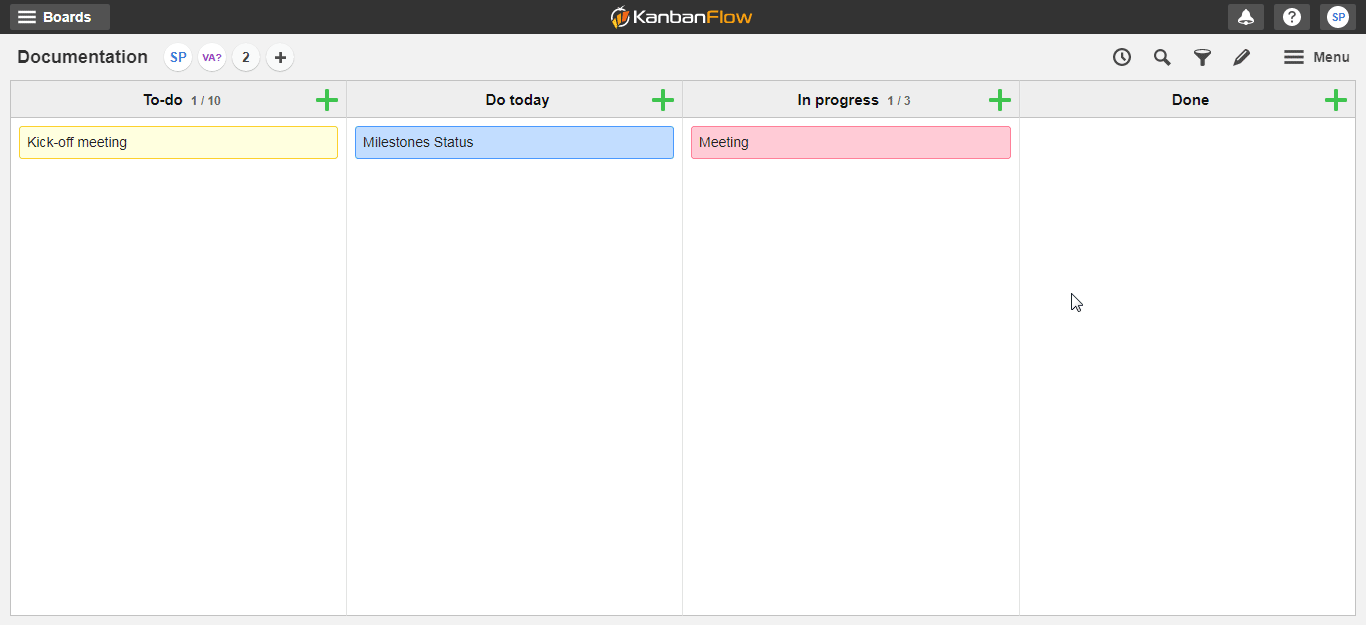
3. Enter a name for the API token, select the permissions, and click Add Token.
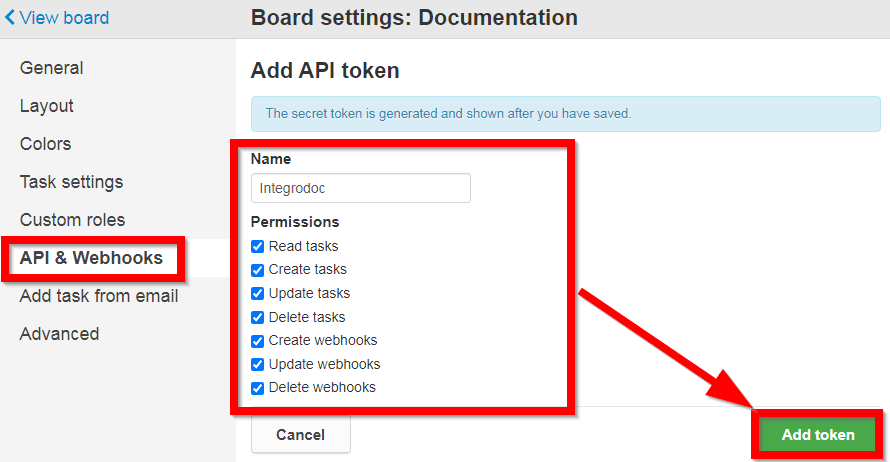
4. Copy the API token to your clipboard.
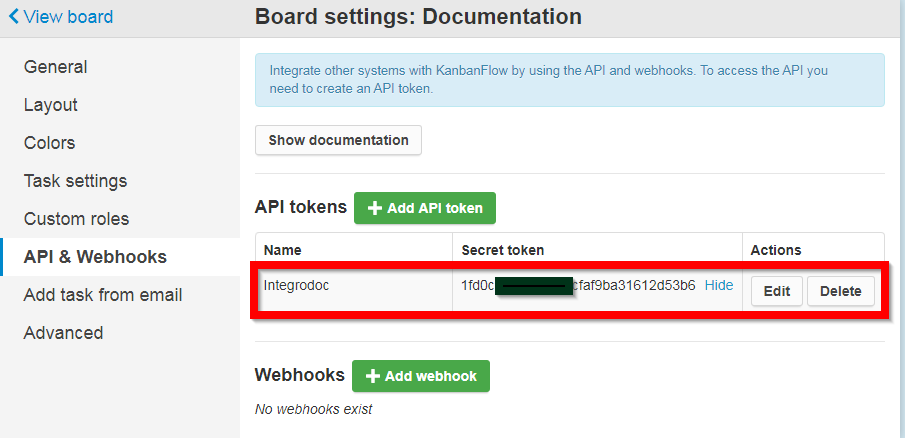
5. Go to Boost.space Integrator and open the KanbanFlow module’s Create a connection dialog.
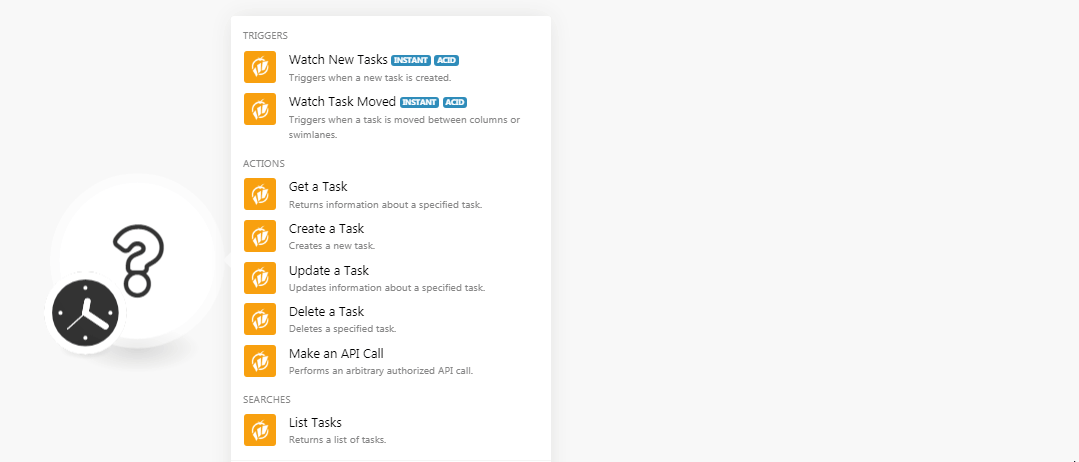
6. In the Connection name field, enter a name for the connection.
7. In the API Token field, enter the API token copied in step 4 and click Continue.
The connection has been established.
TriggersEvery scenario has a trigger, an event that starts your scenario. A scenario must have a trigger. There can only be one trigger for each scenario. When you create a new scenario, the first module you choose is your trigger for that scenario. Create a trigger by clicking on the empty module of a newly created scenario or moving the... when a new task is created.
|
WebhookA webhook is a way for an app to send real-time information to a specific URL in response to certain events or triggers. Name |
Enter a name for the webhook. |
|
Connection |
See the Connecting to KanbanFlow Webhook using Boost.space Integratorto add the webhook in your KanbanFlow account.
Triggers when a task is moved between columns or swimlanes.
|
Webhook Name |
Enter a name for the webhook. |
|
Connection |
See the Connecting to KanbanFlow Webhook using Boost.space Integratorto add the webhook in your KanbanFlow account.
Returns information about a specified task.
|
Connection |
|
|
Choose Task |
Select the option to choose the task:
|
|
Column |
Select the column whose details you want to retrieve. |
|
Task ID |
Enter the Task ID whose details you want to retrieve. |
Creates a new task.
|
Connection |
|||||||||||
|
Name |
Enter the name of the task. |
||||||||||
|
Column ID |
Select the Column ID of the task:
|
||||||||||
|
Swimlane ID |
(Optional) If the board has swimlanes, select the Swimlane ID. |
||||||||||
|
Position |
Select the position of the task in the list. For example, |
||||||||||
|
Description |
Enter the details of the task. |
||||||||||
|
Color |
Select the color for the task. |
||||||||||
|
Responsible UserCan use the system on a limited basis based on the rights assigned by the admin. More |
Select the user who is responsible for the task. |
||||||||||
|
Total Seconds Estimate |
Enter the estimated time for completing the task in seconds. |
||||||||||
|
Grouping Date |
Enter the date if the column date is grouped. |
||||||||||
|
LabelsA label is a “tag” that can be added to items within a module. It's a flexible tool used to categorize and organize data, making it easier to customize workflows and processes. More |
Add the labels: Name Enter the name of the labelA label is a “tag” that can be added to items within a module. It's a flexible tool used to categorize and organize data, making it easier to customize workflows and processes. More. Pinned Select whether you want to pin the label:
|
||||||||||
|
Subtasks |
Add the subtasks:
|
||||||||||
|
Dates |
Add the due dates for the task:
|
||||||||||
|
Collaborators |
Select the user who will be the collaborators in this task. |
Updates information about a specified task.
|
Connection |
|||||||||||
|
Choose Task |
Select the option to choose the task:
|
||||||||||
|
Column |
Select the Column type of the task you want to update. |
||||||||||
|
Task |
Select the task you want to update. |
||||||||||
|
Task ID |
Enter the Task ID whose details you want to update. |
||||||||||
|
Name |
Enter the name of the task. |
||||||||||
|
Column ID |
Select the Column ID of the task:
|
||||||||||
|
Swimlane ID |
(Optional) If the board has swimlanes, select the Swimlane ID. |
||||||||||
|
Position |
Select the position of the task in the list. For example, top, bottom, or a number. |
||||||||||
|
Description |
Enter the details of the task. |
||||||||||
|
Color |
Select the color for the task. |
||||||||||
|
Responsible User |
Select the user who is responsible for the task. |
||||||||||
|
Total Seconds Estimate |
Enter the estimated time for completing the task in seconds. |
||||||||||
|
Grouping Date |
Enter the date if the column date is grouped. |
||||||||||
|
Labels |
Add the labels: Name Enter the name of the label. Pinned Select whether you want to pin the label:
|
||||||||||
|
Subtasks |
Add the subtasks:
|
||||||||||
|
Dates |
Add the due dates for the task:
|
||||||||||
|
Collaborators |
Select the user who will be the collaborators in this task. |
Deletes a specified task.
|
Connection |
|
|
Choose Task |
Select the option to choose the task:
|
|
Column |
Select the Column type of the task you want to delete. |
|
Task |
Select the task you want to delete. |
|
Task ID |
Enter the Task ID you want to delete. |
Performs an arbitrary authorized API call.
|
Connection |
|
|
URL |
Enter a path relative to For the list of available endpoints, refer to the KanbanFlow API Documentation. This can be found in your board API & Webhooks settings > Show documentation: 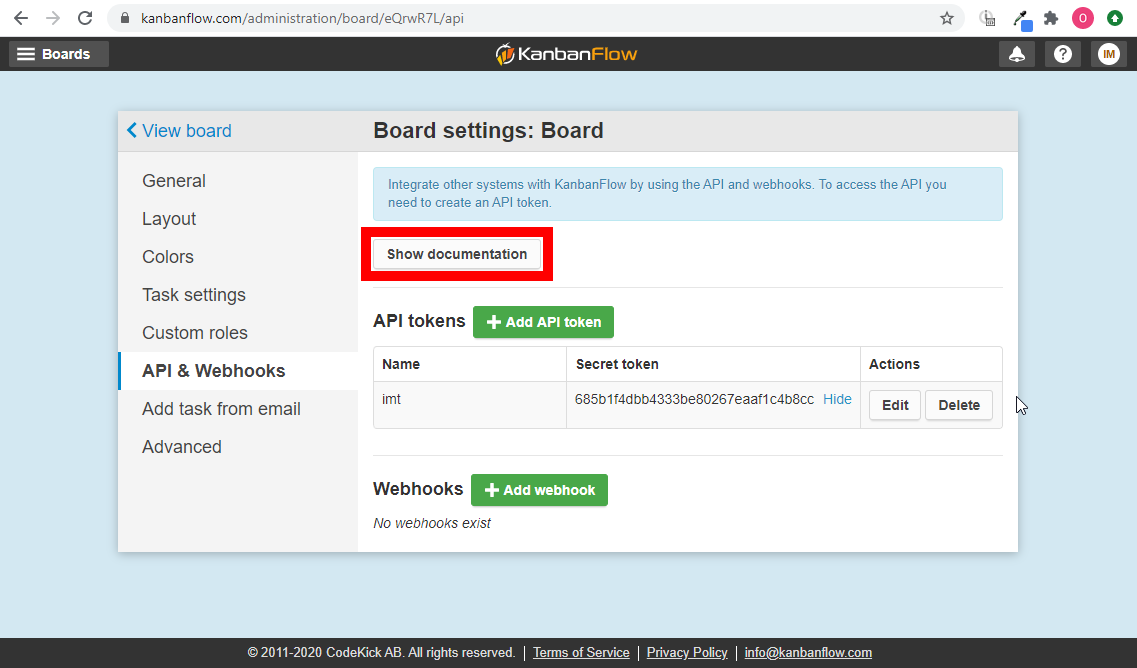 |
|
Method |
Select the HTTP method you want to use: GET to retrieve information for an entry. POST to create a new entry. PUT to update/replace an existing entry. PATCH to make a partial entry update. DELETE to delete an entry. |
|
Headers |
Enter the desired request headers. You don’t have to add authorization headers; we already did that for you. |
|
Query String |
Enter the request query string. |
|
Body |
Enter the body content for your API call. |
The following API call returns all the tasks from your KanbanFlow account:
URL:
/v1/tasks
Method:
GET
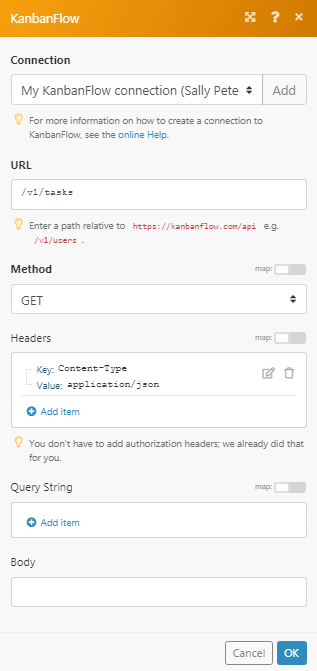
Matches of the search can be found in the module’s Output under BundleA bundle is a chunk of data and the basic unit for use with modules. A bundle consists of items, similar to how a bag may contain separate, individual items. More > Body.In our example, 4 tasks were returned:

Returns a list of tasks.
|
Connection |
|
|
Column |
Select the column whose tasks you want to list. |
|
Limit |
Set the number of returned tasks Boost.space Integrator will return during one execution cycleA cycle is the operation and commit/rollback phases of scenario execution. A scenario may have one or more cycles (one is the default).. |
1. Open thetrigger module for which you want to receive the alerts, establish the connection as mentioned in the respective module, and copy the address to your clipboard.
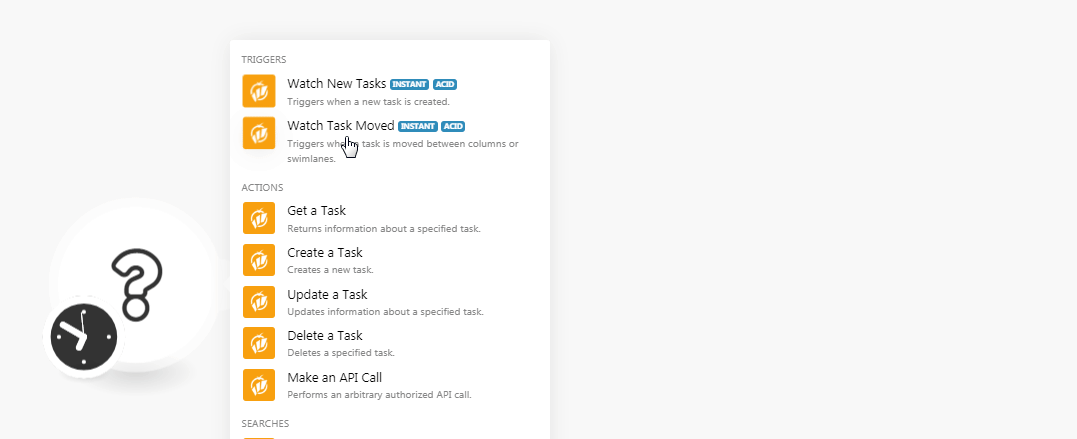
2. Log in to your KanbanFlow account, open the board for which you receive alerts, click Menu > Settings > API&Webhooks > Add Webhook.

|
Webhook Name |
Enter a name for the webhook name. |
|
Callback URL |
Enter the URL address copied in step 1. |
|
Events that should triggerEvery scenario has a trigger, an event that starts your scenario. A scenario must have a trigger. There can only be one trigger for each scenario. When you create a new scenario, the first module you choose is your trigger for that scenario. Create a trigger by clicking on the empty module of a newly created scenario or moving the... this webhook |
Select the events for which you want to receive the alert. |
3. Click Add Webhook.

The webhook is successfully created.

